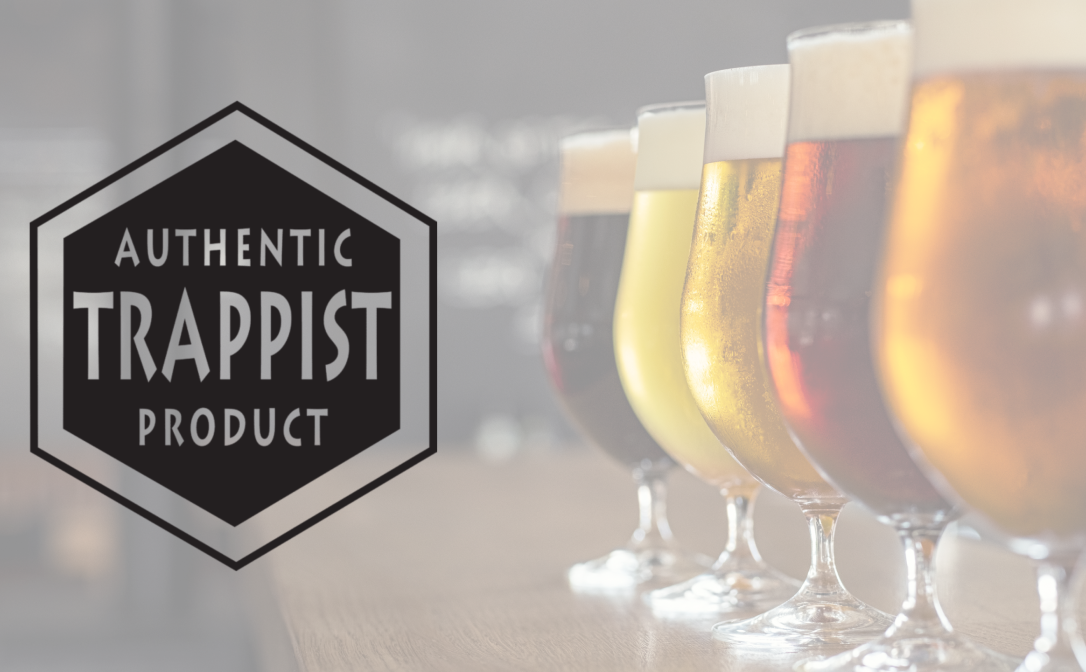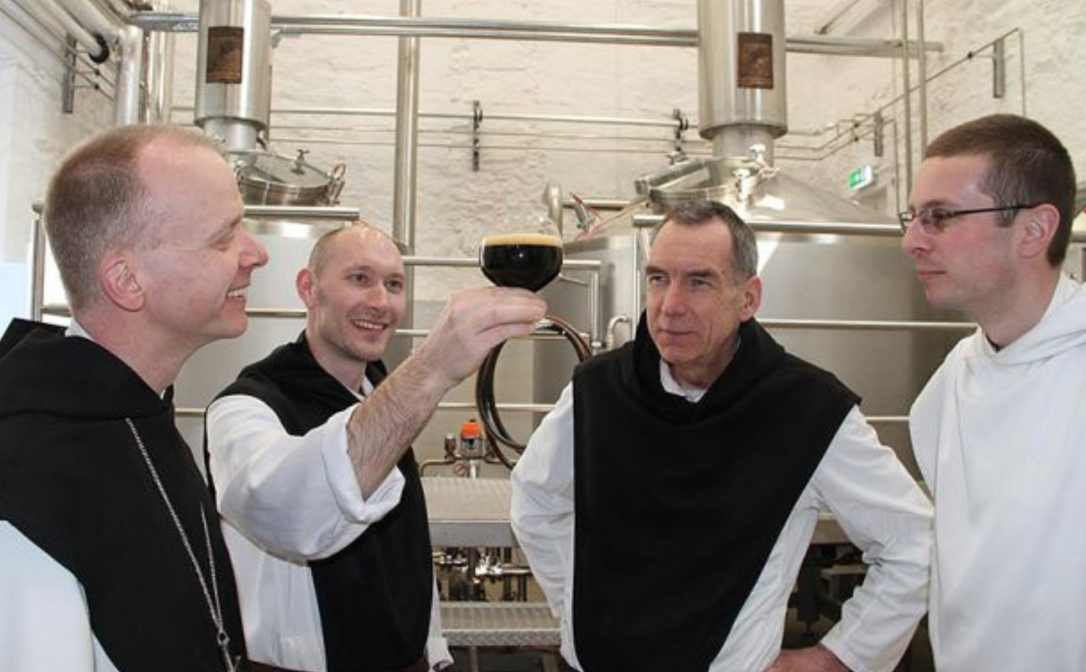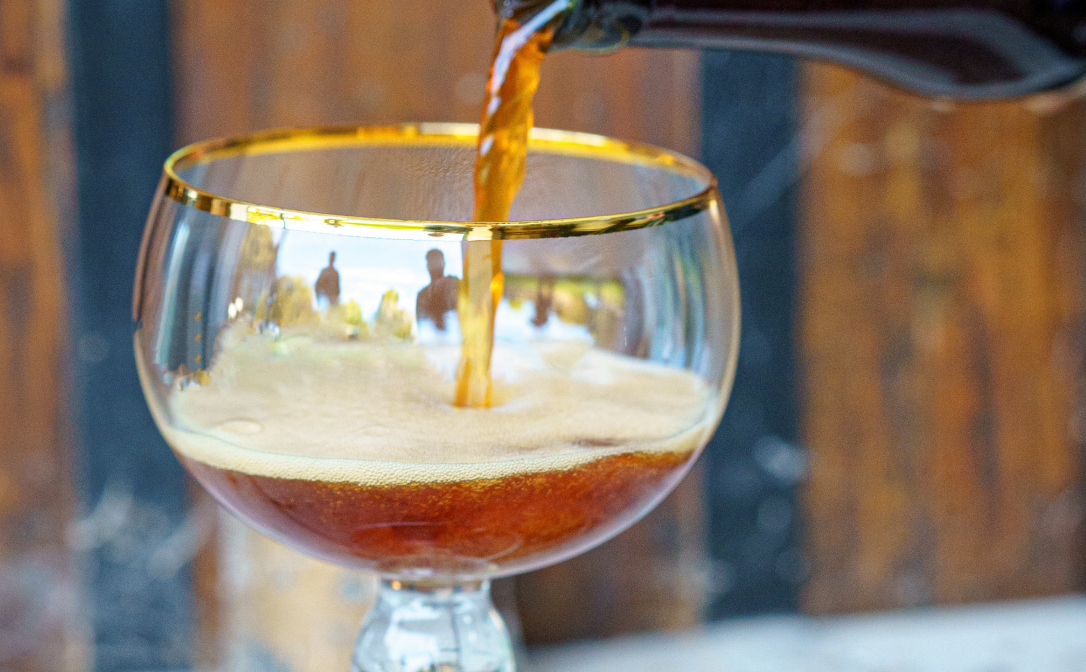Part of centuries of tradition and coveted by beer enthusiasts worldwide, Trappist beers are brewed within the walls of monasteries. You may recognise the ‘Authentic Trappist Product’ label, which indicates that these beers are brewed under strict monastic supervision, with proceeds going back into supporting the monastery. Despite modern challenges, such as rising production costs and a decreasing number of monks, these beers remain a quintessential part of the global beer experience.
While monastic brewing dates to the Middle Ages, Trappist brewing itself is said to have begun in the mid-1600s. Over the centuries, it has developed a variety of styles, including the internationally celebrated Dubbel and Tripel. Whether you have enjoyed one during a European trip or discovered a bottle in a specialty shop, these five intriguing facts are sure to deepen your appreciation for this unique and storied category of beer.

The official Authentic Trappist Product logo
Fact #1: Trappist brewing dates back multiple centuries
Trappist brewing is believed to have originated with the monks of La Trappe Abbey in Normandy, France, potentially dating back to the mid-1600s. The monks, following the Rule of St. Benedict which emphasises "prayer and work," likely began brewing beer as part of their manual labour. This practice served not only to sustain the monastery but also to support charitable causes. This practice has endured over the centuries, with monasteries such as Westmalle Abbey in Belgium continuing their brewing tradition for over 200 years.
Fact #2: Trappist is a protected term
Trappist beers have been crafted by Trappist monks for centuries, with the name "Trappist" originating from La Trappe Abbey in Northwest France, where the Cistercian order began. By the mid-1900s, the exceptional quality and limited production of Trappist beers had garnered international recognition. However, this success led to a surge in breweries capitalising on the Trappist name without any genuine connection to the monastic order. Some simply used imagery of monks or monasteries on their labels, misleading consumers. Today, only beers brewed by actual Trappist monks can bear the name “Trappist.”
Much like “Champagne” or “Roquefort,” the term “Trappist ale” is tightly regulated to ensure authenticity. Founded in 1997, the International Trappist Association (ITA) regulates how the Trappist name is used, ensuring that only monasteries meeting strict criteria can use the “Authentic Trappist Product” label. For a beer to be designated as Trappist, it must be brewed within the monastery walls under the supervision of monks, and the profits must go towards sustaining the monastic community or supporting charitable causes.
Today, only 11 breweries worldwide are authorised to produce certified Trappist beers, each adhering to these rigorous standards to maintain the integrity of the Trappist tradition.

Behind the scenes at Mount St Bernard Abbey, a Trappist brewery in Coalville, England
Fact #3: Dubbel and Tripel beer styles were originally Trappist
For those more familiar with lagers and IPAs, the world of Belgian Trappist ales might seem a bit like stepping into uncharted territory. Dubbel, Tripel, and even Quadrupel are not just catchy names, they represent a rich brewing tradition rooted in centuries-old monastic practices.
Dubbel and Tripel, two of the most famous Trappist styles, originated in the Trappist monasteries of Belgium. The Dubbel style is known for its copper-to-brown colour and complex aroma profile, featuring notes of toasted bread, caramel and dried fruit from the selected malts and dark sugars used. You’re also likely to pick up fruity aromas of apple, plum and prune from the abbey ale yeast used, which also adds a touch of spice, such as clove and peppercorn. Dubbels tend to have medium bitterness, high carbonation and high alcohol, which can give a light warming sensation. This style is traditionally conditioned in bottle.
Tripels, on the other hand, might catch you off guard if you’re expecting something darker than a Dubbel. Instead, they pour golden and clear with subtle aromas of honey and breadcrumb as well as bright, fruity notes - think citrus and banana - layered with spicy peppercorn or clove. Similar to Dubbels in their medium level of bitterness, Tripels are typically stronger in alcohol and can reach above 9% abv.
Interested in learning more about the various beer styles? Take a look at our Levels 1 and 2 Awards in Beer.
Fact #4: Only 10 Trappist breweries exist worldwide
As of 2024, there are only 10 Trappist breweries in the world. These monastic breweries are spread across Belgium, the Netherlands, Austria, Italy, and the UK. Famous names like Westvleteren, Chimay, Rochefort, and La Trappe are not only known for their top-notch brews but also for their rich histories. The limited production of some of their beers, like the legendary Westvleteren 12, makes them incredibly sought after.
Fact #5: Trappist beers are best served in chalices or goblets
Trappist beers are traditionally served in distinctive glassware such as specifically designed chalices or goblets. Chalices are robust and heavy, while goblets are more delicate and thin. These glasses aren’t just for show; they help maintain the beer’s head, enhance its aroma, and highlight their rich colour. Some even have etching inside the base of the glass bowl to create a steady stream of bubbles, keeping the beer lively.

A typical beer goblet
Abbey beers vs Trappist beers
It's important to understand the difference between Abbey beers and Trappist beers. While both can share similar styles, the key distinction lies in their origins and production criteria. Trappist beers are brewed within the walls of a Trappist monastery under the supervision of monks, and they must meet stringent requirements set by the International Trappist Association (ITA). In contrast, Abbey beers are brewed in the same styles but by non-Trappist orders or commercial breweries.
As more breweries began to produce beers similar to Trappist styles and label them as “Trappist,” the Trappist orders established the ITA to protect the authenticity of Trappist products. Beers that do not meet these rigorous standards are referred to as Abbey beers (Bières d'Abbaye or Abdijbier). While Abbey beers may follow traditional Trappist recipes, they are often produced by large commercial brewers who have adapted these recipes and branded the beer with the name of either a real or even invented monastery. Despite the differences, certain Abbey beers can be just as good as their Trappist counterparts.
Ready to sign up for one of our beer qualifications? Click here to find a course provider near you.


